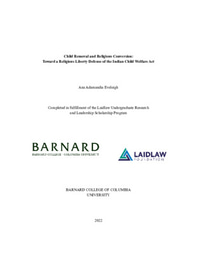Translating Gender, Translating Empowerment - Reflection 3
What is “empowerment?” A buzzword common in the human development and NGO worlds, I worked this summer in a Jordanian NGO’s department of tamkin almar’a, or gender and female empowerment. As a non Jordanian, non Muslim woman in a department full of hijabi women, I was a cultural and religious outsider seeking to understand and emulate how my colleagues understood “female empowerment” work.
Since childhood, I’ve had a painted wooden sign in my bedroom that reads “Empowered Women Empower Women.” From my perspective, this is the idea that a woman with the resources, confidence, and support necessary to achieve her goals will go on to share those resources with women who aspire to great things and provide mentorship, creating over time a collective populace of women who are leading independent, fulfilled lives. From my American point of view, the sign conjures a particular image not unlike Greta Gerwig’s depiction of “Barbieland” in the widely-viewed 2023 film Barbie. In the Barbieland feminist utopia, racially diverse though notably secular women are happy, living in community, and have achieved high-paying careers in law, government, and medicine. Barbieland is a victory lap of empowered women who have empowered women.
There’s a reason Barbie premiered over a month late in many Middle Eastern countries, including Jordan. According to the Los Angeles Times, Lebanon’s minister of culture tried to ban screening of the film on the grounds that it would “contradict values of faith and morality.” Similarly, Kuwait’s ministry of information moved to censor the film, stating that Barbie promotes “ideas and beliefs that are alien to the Kuwaiti society and public order.” Truly, when I watched Barbie in theaters a few days after returning to the U.S. I experienced a reverse culture shock; the western idea of the empowered girlboss Barbie makes little sense through the lens of a collectivist culture like Jordan.
Barbie is an individualistic (fictional) woman who strikes out on her own to build her career and the life of her dreams. This vision of an empowered woman is barely viable in America: a feminist and utopian version of the American Dream, the film ironically highlights Barbieland’s flaws and acknowledges the socio-economic and racial privilege it takes to achieve this kind of life. Compared to the individualistic United States, Jordan is a collective, family-based culture in which it is not common for a woman to live independently. Most women live with their families until marriage, and if employed, are still expected to perform the majority of domestic labor. Thus the girlboss vision of empowerment championed in contemporary American culture does not go far to help women in Jordan, as most Jordanian families would consider the pursuit of such a life to be socially taboo.
So what does effective female empowerment work look like in Jordan? In other words, what is the Jordanian way of doing female empowerment, separate from the American model? In my experience, I wasn’t the only employee in my department who couldn’t answer this question. A main challenge in the field of NGO work is that initiatives are tied to grant money, mostly from western-based international organizations or foreign governments. I learned that in recent years, it has become common for international aid organizations to earmark funds for “women’s empowerment.” Thus, local NGOs including where I worked have reorganized themselves around money streams, creating departments like mine of gender and female empowerment.
Female empowerment work is certainly needed in Jordan. According to a 2021 report of the International Labor Organization, Jordan ranked 131st out of 156 countries in the Global Gender Gap Index (“133rd in economic participation and opportunity, 153rd in labor force participation, wage equality for similar work 56th”). From my short-term observation, I was simultaneously heartened and disheartened by the work of my department in addressing gender inequality on a systemic level. Speaking positively, my colleagues successfully navigated foreign grant money to implement a series of projects over the course of my three-month tenure, targeting issues including domestic violence and the lack of women in STEM careers. However, my colleagues spent significant time logging project progress and reporting as well as corresponding with donors all in English, a language few could speak well. Furthermore, some external donor-created initiatives were textbook girlboss Barbie. For instance, one international corporation gave annual grant awards for female entrepreneurs building small businesses in the arts or agriculture. Though putting money in women’s pockets directly is beneficial in some cases, in the Jordanian family system it is most likely that those funds will be used to support the family as a whole; the structural problem of gender inequality in Jordan will not be solved by granting individual women money. Thus, the field of international women’s empowerment aid could be more effective.
It is clear that development work is messy. In a globalized world it is necessary to share resources, yet doing so requires navigating a system built by and for rich countries. I experienced this directly when my coworkers came to me for help, though I was decades their junior, when applying for critical grant funding and even while imagining new initiatives to benefit Jordanian women. On several occasions, my supervisor (an extremely competent woman with her doctorate in gender empowerment and Arab feminisms) would come to me after drafting a new initiative in Arabic and ask me to read it, seeking my feedback and approval. Though totally unqualified to assess her work in reality, she perceived me as the western-lensed insider who would read the application, understanding exactly what gender and female empowerment was all about. Similarly, during my first week I was tasked with writing podcast episodes for broadcast on the organization’s community radio station defining gender and the issues facing women in Jordan. I was able to complete the task with support from my Jordanian coworkers, but was disturbed by the implicit message that I was inherently qualified to define gender for the Jordanian radio. Though I was a cultural outsider among my coworkers, I was unknowingly (or at least perceived as) an insider to navigating international aid systems, given my western education and native English speaking and writing ability.
Like Gerwig’s portrayal of gender norms in Barbie, the concept of empowerment as understood by international donors today doesn’t quite translate among collectivist communities. The development subfield of gender empowerment must be more aware of local customs, and international aid organizations must take basic steps to help local staff succeed in implementing empowerment initiatives such as hiring translators to assist in reporting communications. Gender empowerment is important, particularly in the Middle East, and international aid can make an impact. Yet empowerment must be understood as a local process aiming to produce local solutions rather than a universal ideal bathed in Barbie pink.


Please sign in
If you are a registered user on Laidlaw Scholars Network, please sign in